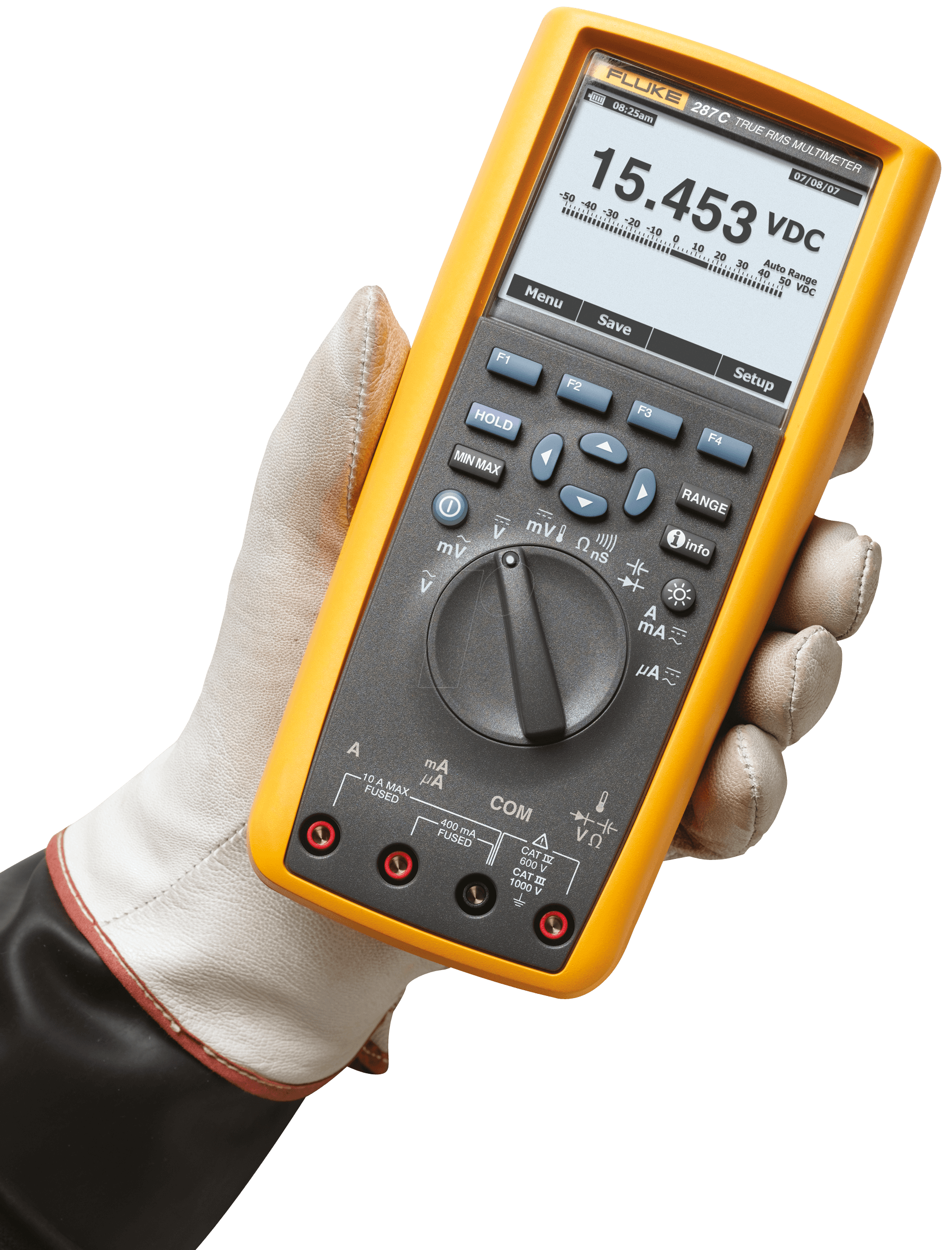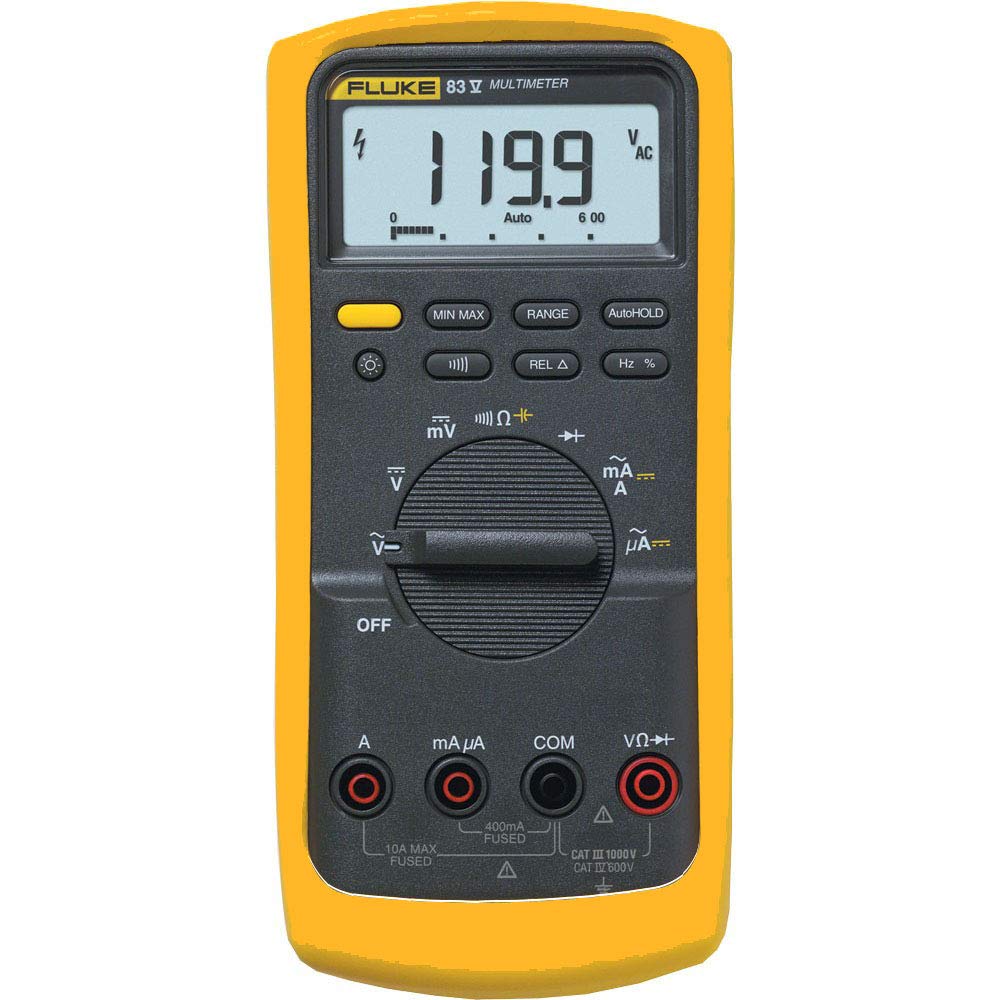

It’s nice to know there’s been effort on the physical safety of the device. How do the el’cheapos compare on this front? If I bought two el’cheapo meters, are they likely to both read about the same or are they going to give me two wildly different answers? How close would either be to a “quality” meter? Those do see the business end of LV circuits on a regular basis, so there’s good reason to do this. The Fluke meters at work get regularly re-calibrated. I doubt it’ll get calibrated again, so I expect over time it will drift off those original figures, but compared with an el’cheapo, probably still competitive. I don’t have the equipment to verify that calibration, but for what I use it for, it seems to be on the mark. It came with a calibration sheet to show that it had been factory calibrated. The only thing I miss is the ability to read current, which can be achieved with a current shunt and some maths anyway.
Fluke multimeters manual#
It was chosen because it could do manual ranging as well as auto-ranging and had Sigrok support if I want it. I have a Keysight multimeter which I bought to replace a Digitech-branded meter that broke down (basically a part on the rotary switch broke… one of these days I’ll raid the filament at HSBNE for a replacement part). Posted in Tool Hacks Tagged aneng, fluke, multimeter Post navigation The cheap meters are certainly good enough, even though you do get what you pay for, as you might expect.Īs long as you have a meter open, you might as well hack it to have WiFi. Of course, if you don’t have a few hundred volts running through your meter, it probably doesn’t matter. The Fluke also has a significantly larger number of protection devices and heftier components, you presume can take more punishment.
Fluke multimeters Pc#
The Fluke also has a proper rotary switch, while the cheap meter has a switch that is etched on the PC board a cost-cutting trick that’s often a point of failure on these cheap meters.

In addition, the Fluke has an internal case that helps keep you away from live voltage. The initial opening shows that the Fluke has hefty brand name fuses, but the Aneng has little generic fuses. For comparison, he opens up a Fluke 26-III and an Aneng AN870 (retailing at about $500 and $30, respectively). The meter you have uses a less protective fuse type, but still WAY better than a cheap ABC fuse.When talks about cheap meters, he always says, “If you are doing this for a living, get yourself a Fluke.” But he realized he’s never shown the inside of a Fluke meter, so he rectified that in his most recent post. For example, 11 A, 1000 V FAST Fuse (Fluke PN 803293) which costs about $10 in one-off. The consequences of arc flash in situations where fault currents can exceed 10kA are very unpleasant.įluke meters tend to have genuine CAT III 600 V ratings and massive internal fuses to protect the user. If you are doing industrial electrician work, it is mandatory, in my opinion, to have a meter with a Fluke level of protection.

If you never work with anything over a few volts this won't matter much (you might wreck your meter or burn yourself on the leads), but for mains voltages it is far more important and can definitely be a safety issue. Note the interrupting capacity of 10kA! At 600VDC! AGC10A fuses have an interrupting capacity of only 200A at only 250VAC (no DC rating). Here is data from the Chinese manufacturer with links to UL and TUV certificates. If you are in the US, Home Despot lists them for $7 ea. Some meters from your supplier (you didn't give a model number) are rated at 600V 10A. The fuses used in multimeters are larger because they are rated to safely break relatively high voltages and high fault currents without excessive arcing and without exploding. If you replace the fuse with another type (particularly a smaller type) you will compromise the protection.


 0 kommentar(er)
0 kommentar(er)
